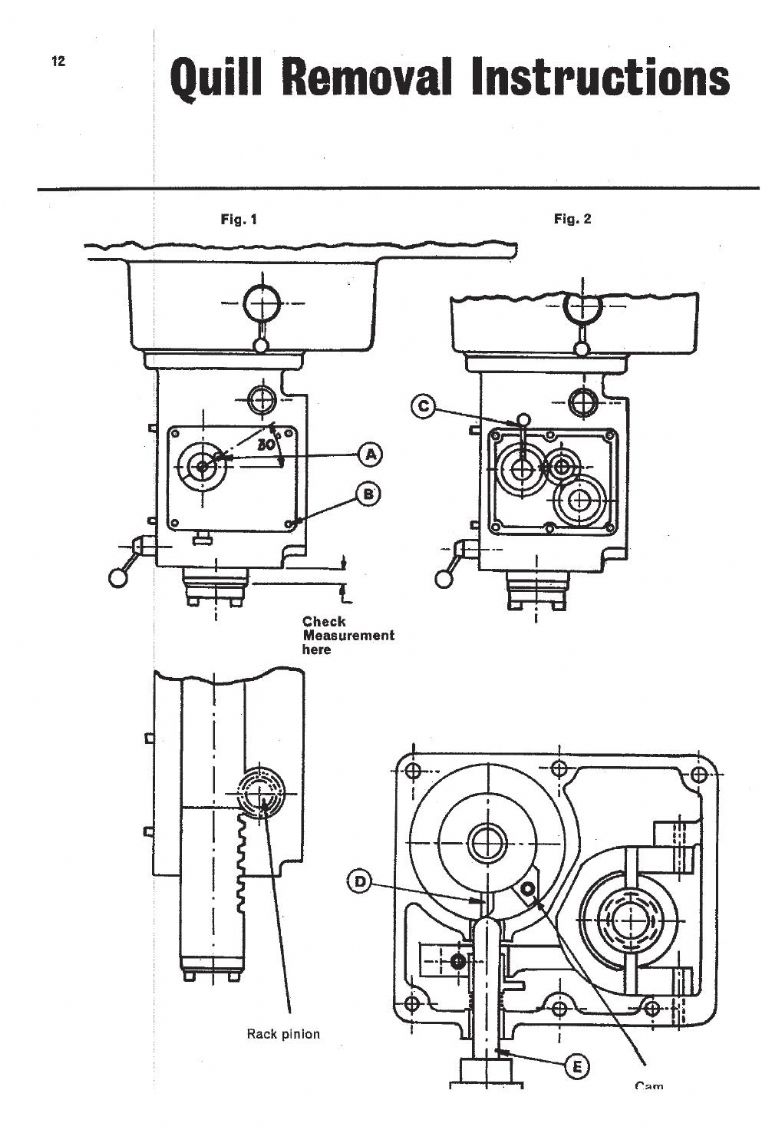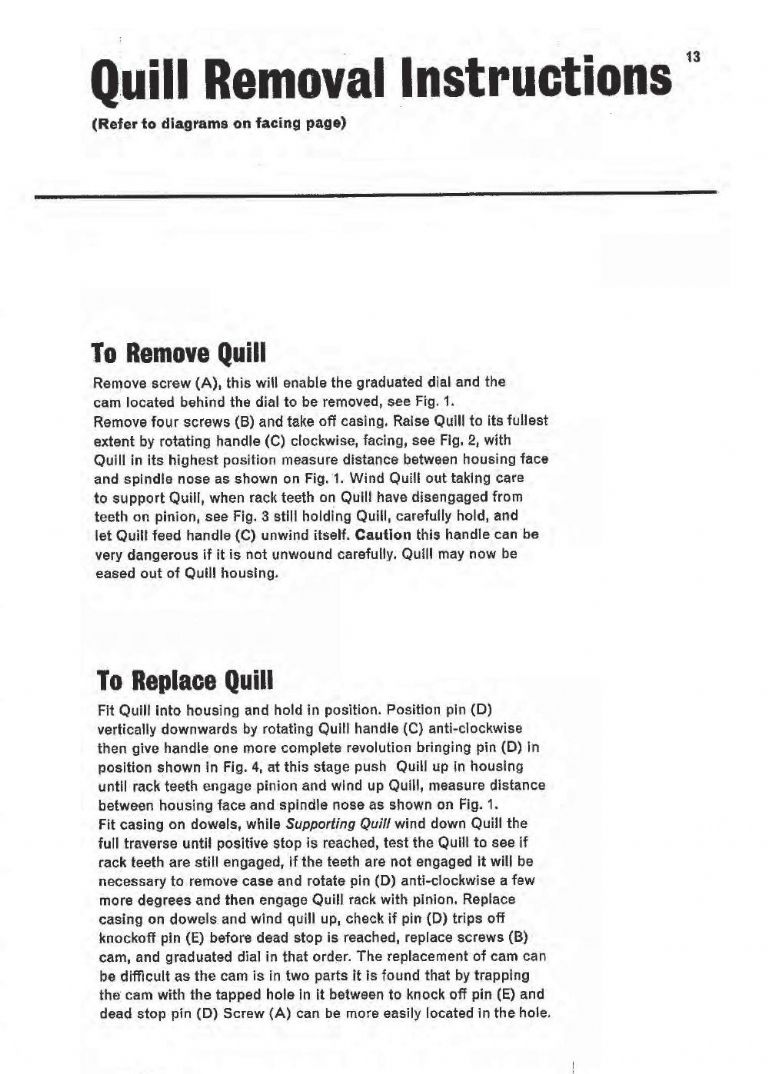Hi. The gib dimensions I gave are 9.5" long, and I am sure the table is wider than that.
Look again at this specific picture
Near the blue letter A in a circle, at the bottom of the picture, you can see a gib adjusting screw touchung the gib.Look at the opposite end of where the gib sits and you can see there is a pocket for the other adjusting screw. The pocket starts and widens out at the end of the gib. Only one screw is shown, but lets hope it's the one you need.
Like most people, my mill is in assembled and in use, and the apron assembly is the other way up, so I'm definitely unable to take pictures of that area. I could take a picture of the front and back gib screws in situ if that would help?
Later… I've just done some measurements and photos of the mill. Yes, the table is about 10" wide (I see 255.0mm). Underneath, at the height the gib is at :
Apron measures 252.5mm wide.
Front of the gib 9.28mm from the front of the apron.
Rear of the gib 6.31mm from the rear of the apron.
Calculate the gib length from that gives : 252.5 – 9.28 – 6.31 = 236.91mm
The spare I previously measured at 241.3mm, so there a couple of mm descrepancy, which I can well believe from these rough measurements.
Like you, I had the image in my mind of the screws being wholly in front of and behind the gibs. In fact, the screw (assy?) is mostly above or to one side of the actual gib key.
These pictures may help. Sorry for the space, I can't see how to do thumbnais.










Edited By Peter_H on 02/10/2019 15:08:50
Mark Guy.


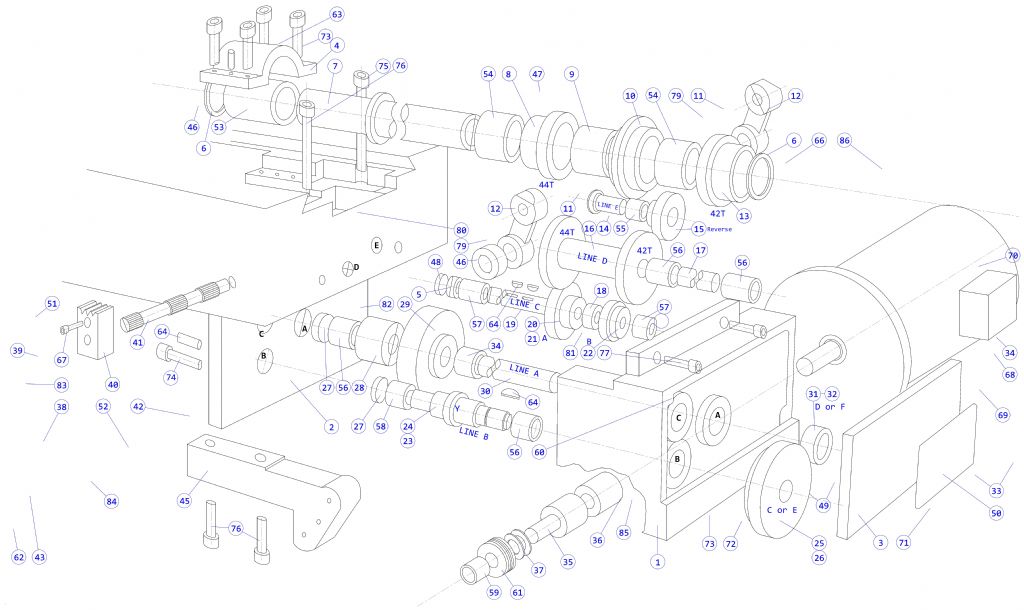
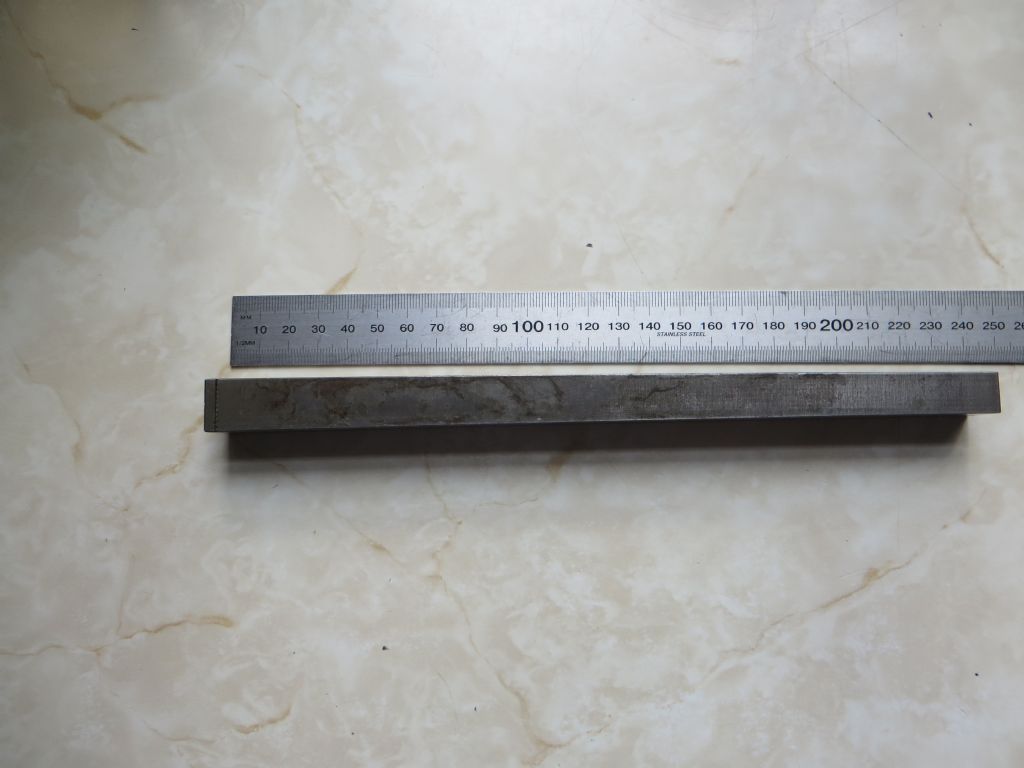
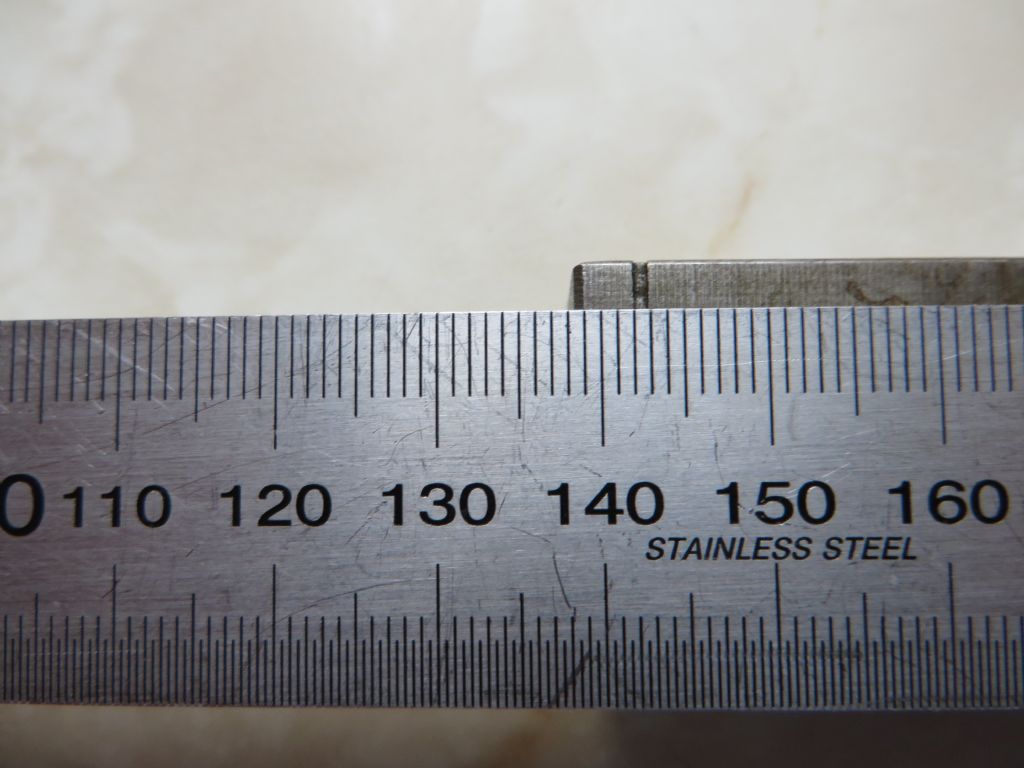
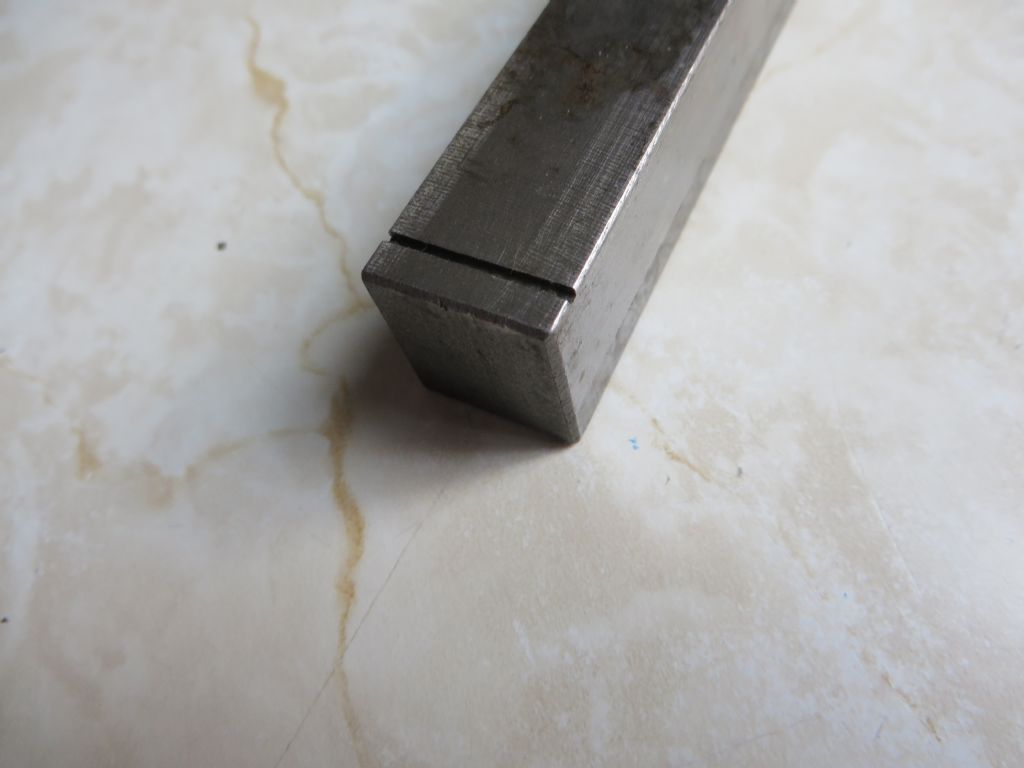

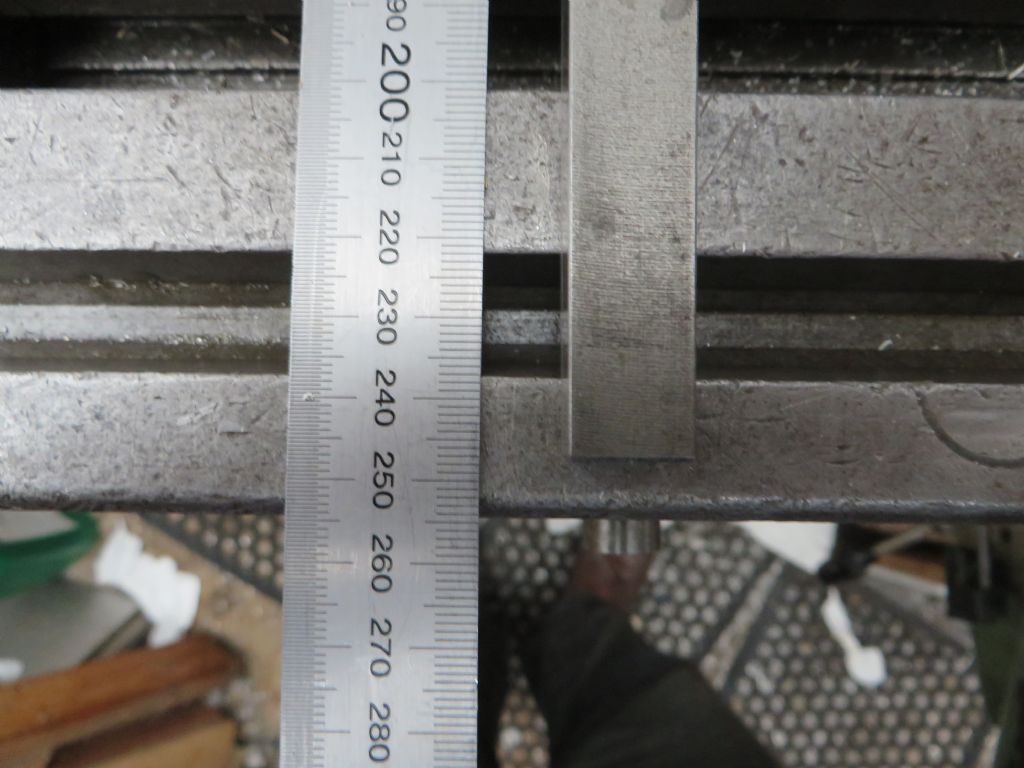
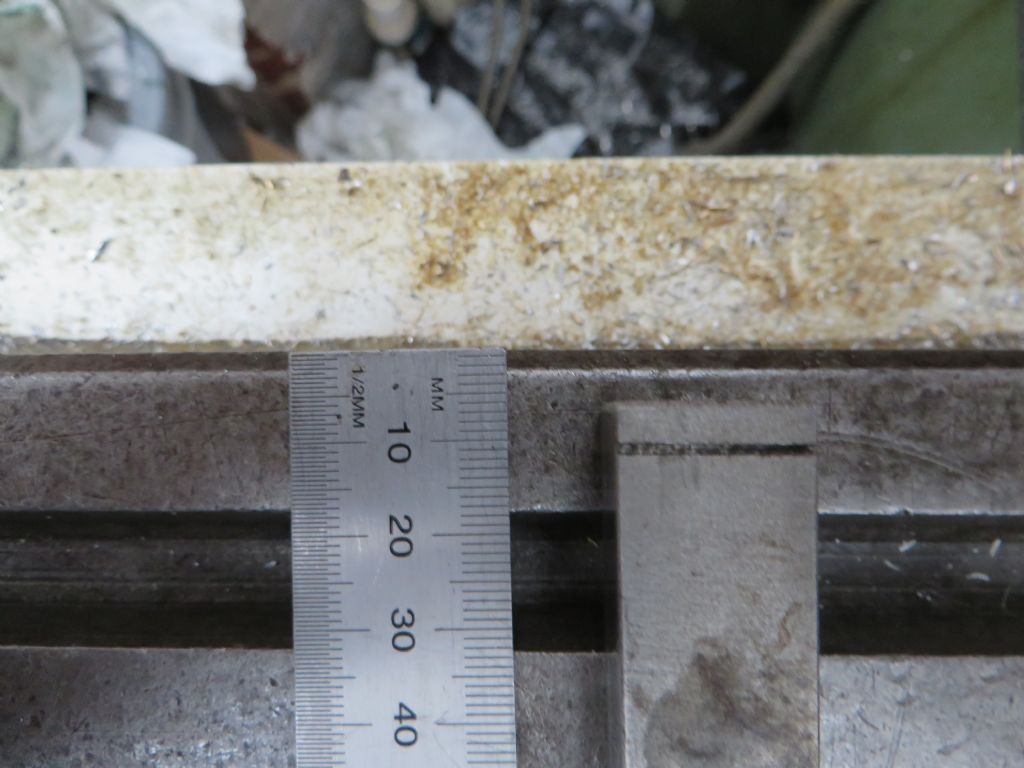
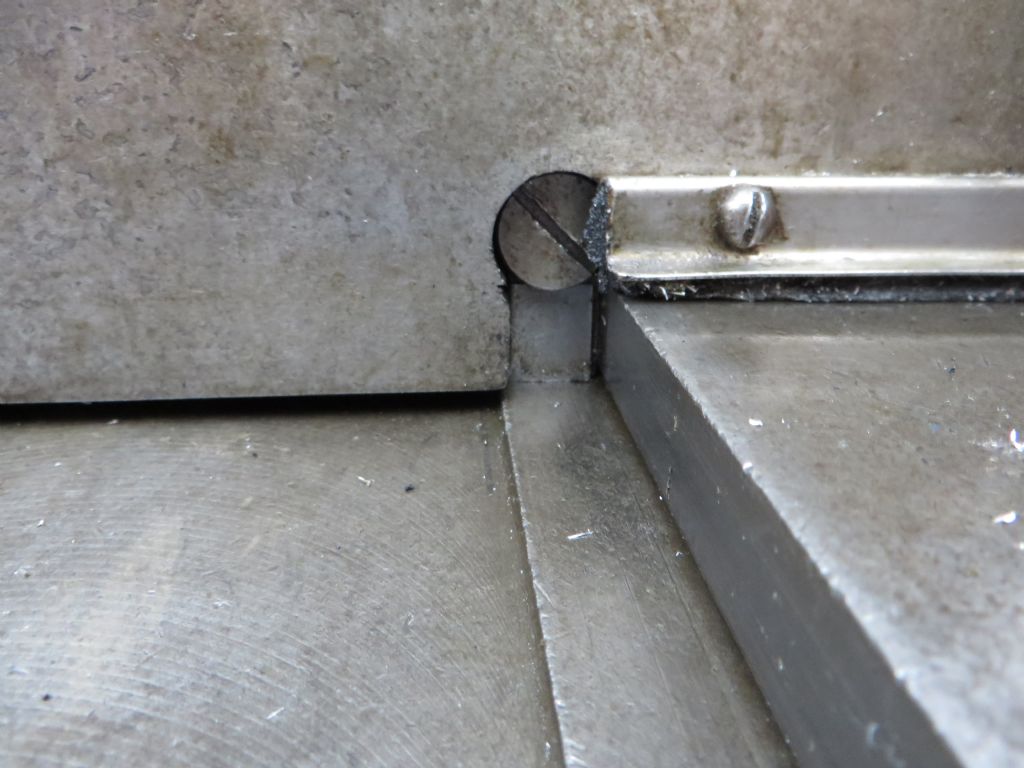
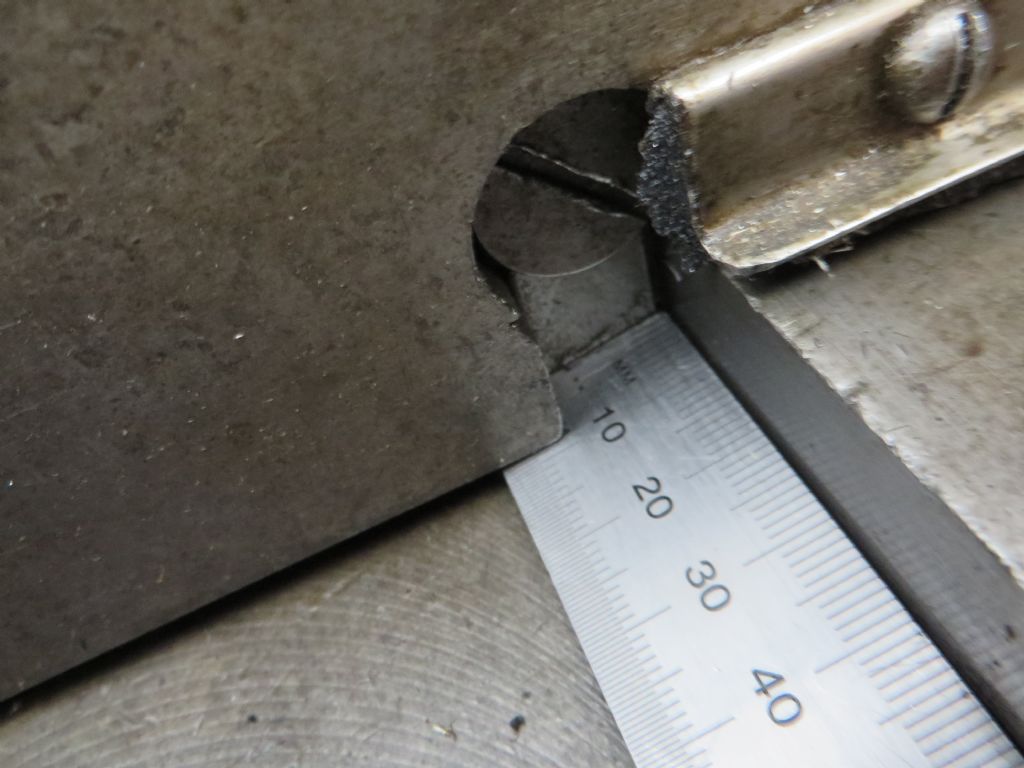
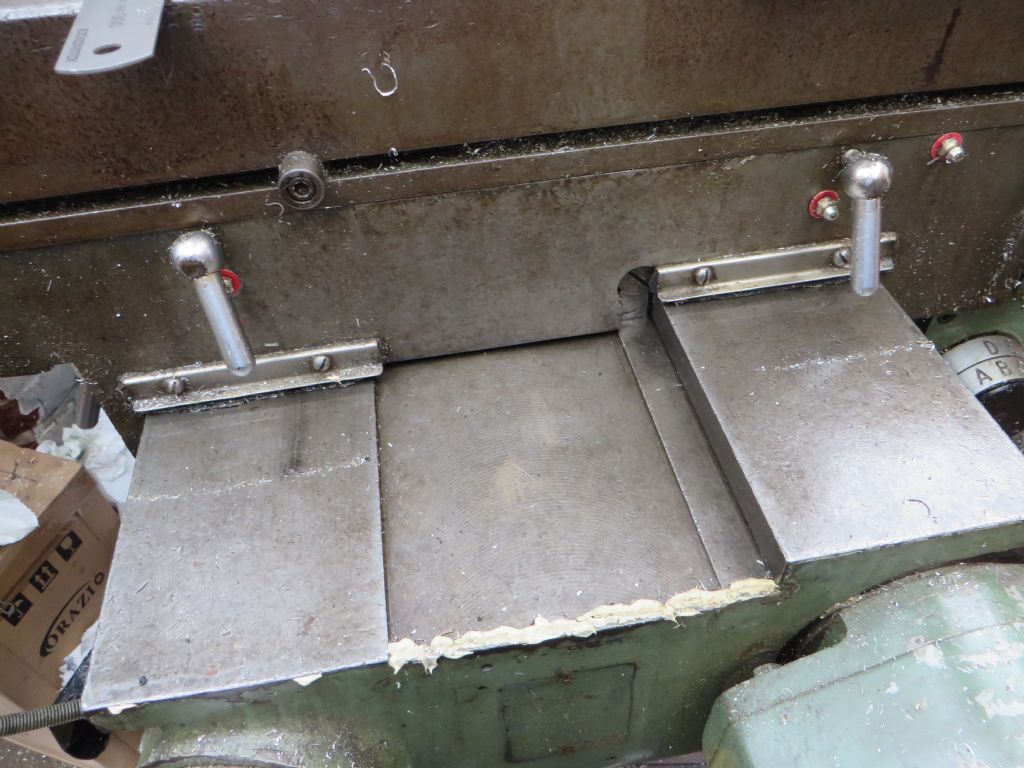
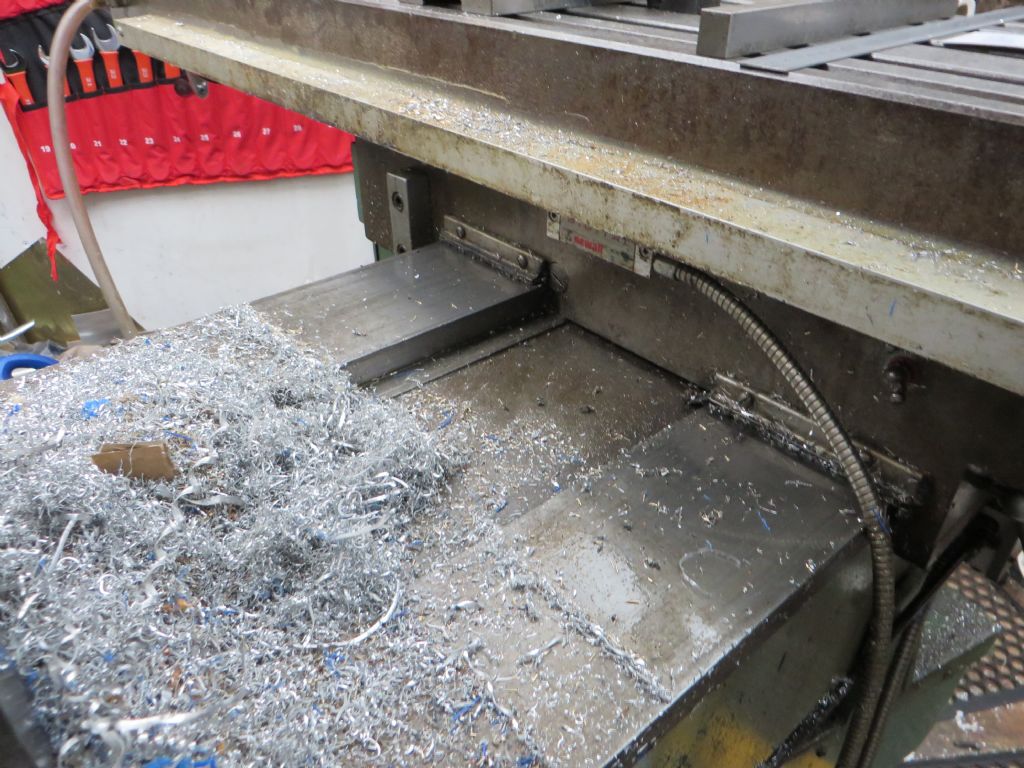
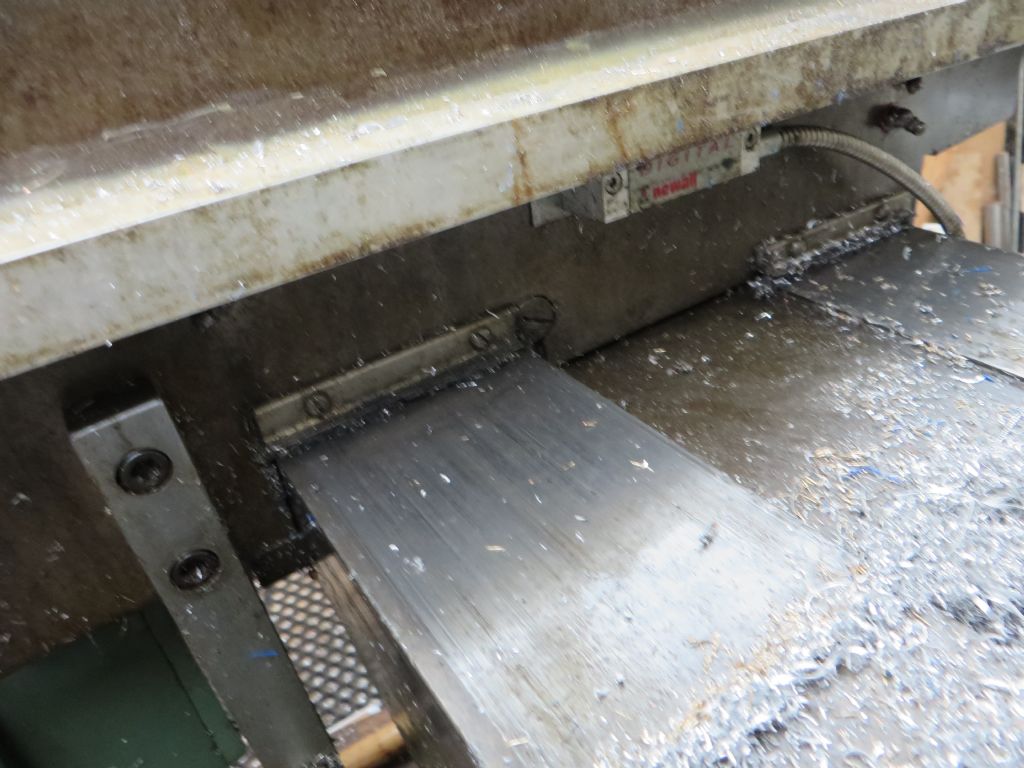
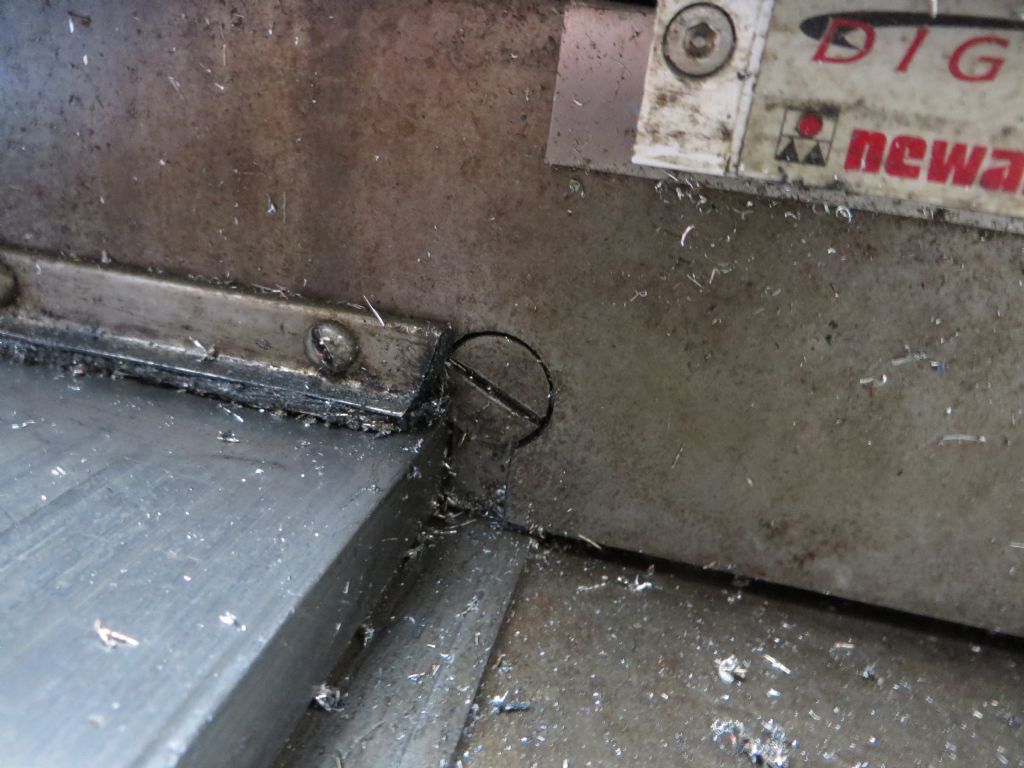
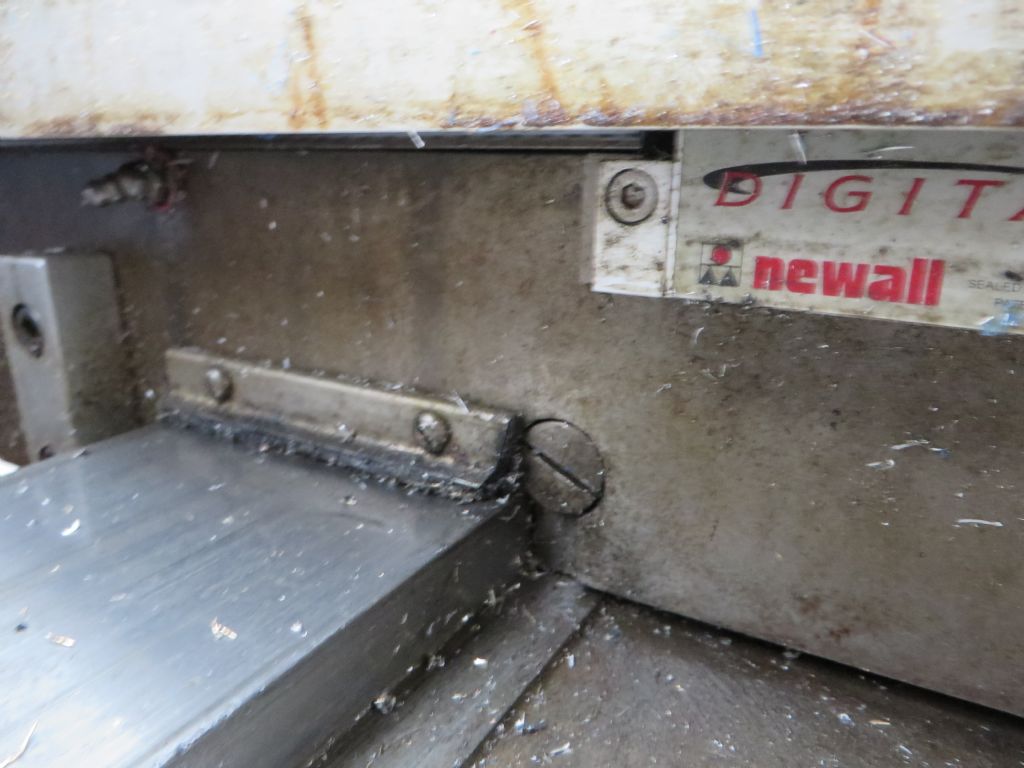

 . Looks like the wiper material is felt.
. Looks like the wiper material is felt.